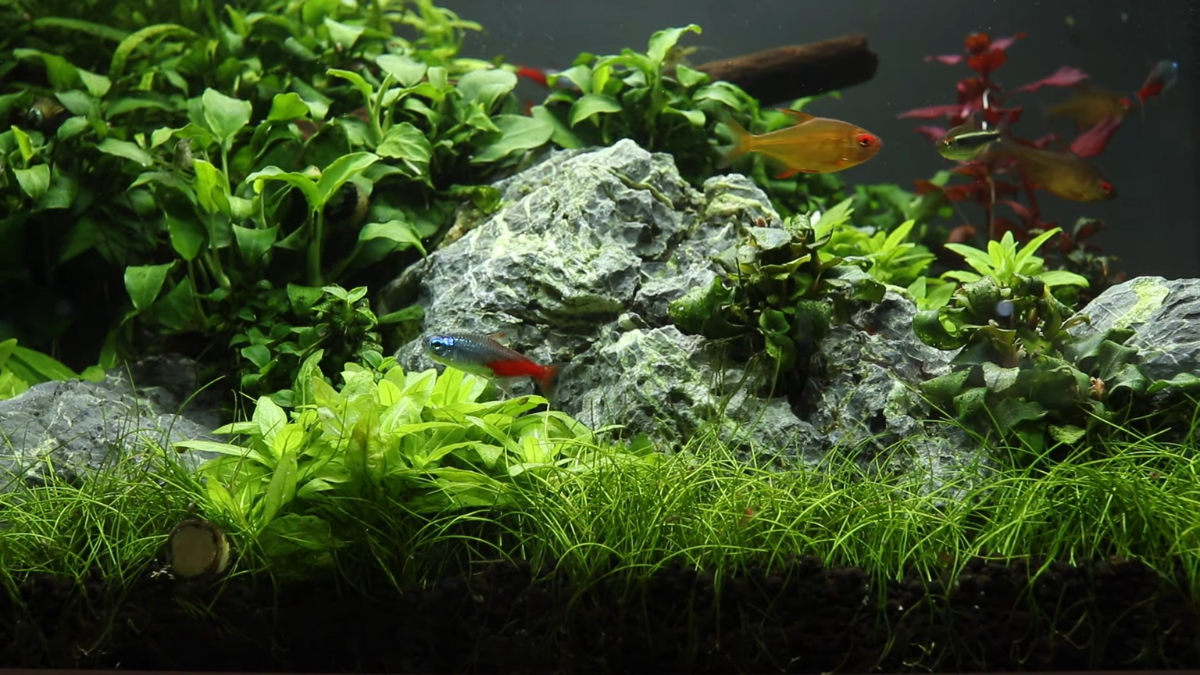Aquarium plants play an important role in freshwater aquariums. But all the aquarium plants in the hobby are not easy to keep and maintain. Here we are talking about the top 10 beginner aquarium plants for aquascaping.
Are live plants good for a fish tank?
Aquarium plants give a lot of benefits to freshwater aquariums. They act as a natural filter by absorbing excess nutrients and toxic substances like Nitrates.
As well as, aquarium plants provide a good surface area for beneficial bacteria to grow up. As we mentioned in our Aquarium Nitrogen cycle, beneficial bacteria are essential for a healthy aquarium.
Finally, aquarium plants add natural beauty to your aquarium. You can easily use aquarium plants to decorate your fish tank. Also, they provide excellent hiding places for little fish fries.
What is meant by Easy Aquarium plants?
All aquarium plants need lights and other nutrients to survive and thrive. But some varieties can satisfy with low or moderate levels of lighting and nutrients. Those easy-to-maintain aquarium plants can be categorized under easy aquarium plants.
Easy aquarium plants are perfect for beginners with starter aquarium kits. Some of them are among the most beautiful species. No matter your aquarium system or expertise level, easy aquarium plants can make your aquarium successful.
What are the easiest aquarium plants to keep in Low light Conditions?
Here we focus on the popular easy-level aquarium plants suitable for a wide range of aquarium conditions. These aquarium plants can usually grow well under low to moderate levels of light, require fewer nutrients, and can survive without external CO2 injection.
Amazon Sword
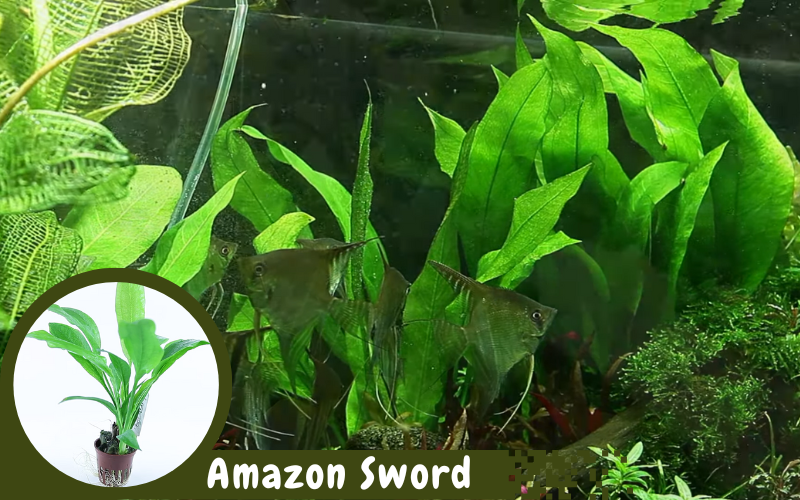
Echinodorus “bleherae” is commonly known as the Amazon sword and has been in the hobby for many decades. It’s an eye-catching rosette plant. You can keep these plants alone or in groups as a background plants in large aquariums.
The overarching leaves of the Amazon sword can create shade for nearby aquarium plants. Actually, these plants are good to be used as a great focal point or centerpiece plant in your aquarium.
Amazon sword is a nutrient-hungry species that requires a nutrient-rich substrate. So it’s better to feed with a good liquid fertilizer regularly.
Amazon swords have a high growth rate even in lower lighting conditions and CO2 injection is not necessary. To minimize the excess growth, you can simply remove the largest leaves of the plant by carefully separating them from the rootstock. This will promote new leaf growth too.
Eleocharis parvula
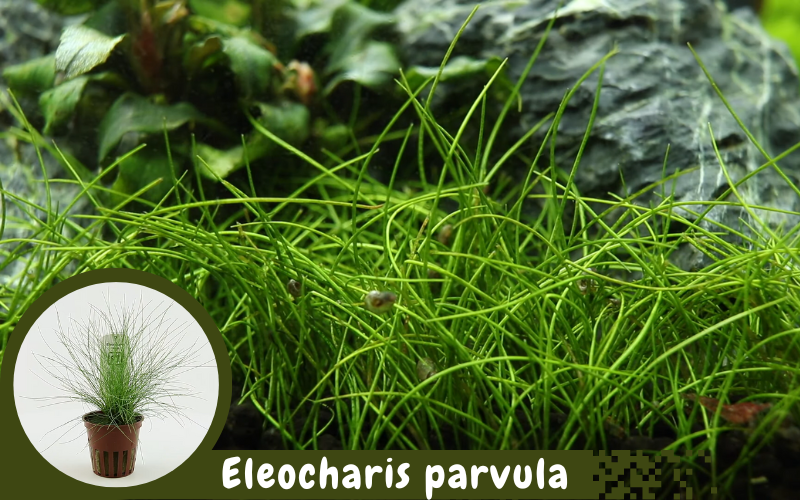
Eleocharis parvula is commonly known as Dwarf Hairgrass and is characterized by its short fine spiky leaves that rarely grow over 4cm tall. In a few weeks, it sends out runners and forms an attractive solid lawn across the substrate.
It may take some effort to prepare the plant by splitting it into as many individual portions to cover the tank economically. This provides better coverage across the aquarium, leading to a fuller carpet growing more quickly.
Tweezers are essential for the planting process. It can grow with moderate lighting levels without CO2 injection, but you can get better results with CO2. A soil substrate promotes the growth of its delicate roots.
Eleocharis parvula is a relatively slow-growing aquarium plant. So it requires less maintenance than many other carpeting species. It will gradually form a more dense lawn. It may cause over-accumulation of organic waste and poor plant growth in lower layers.
Overgrown plants can reduce water circulation and light penetration. So it’s better to thin out the plants occasionally with aquascaping scissors. Vacuuming the lawn with a siphon hose just above the plants can help to remove excess organic waste.
Algae-eating shrimp are also a good idea to keep the plants free from algae and uneaten food. Over several months of growth, the entire carpet can be removed in one go, and you can replant the healthiest portions.
Cryptocoryne Wendtii Red
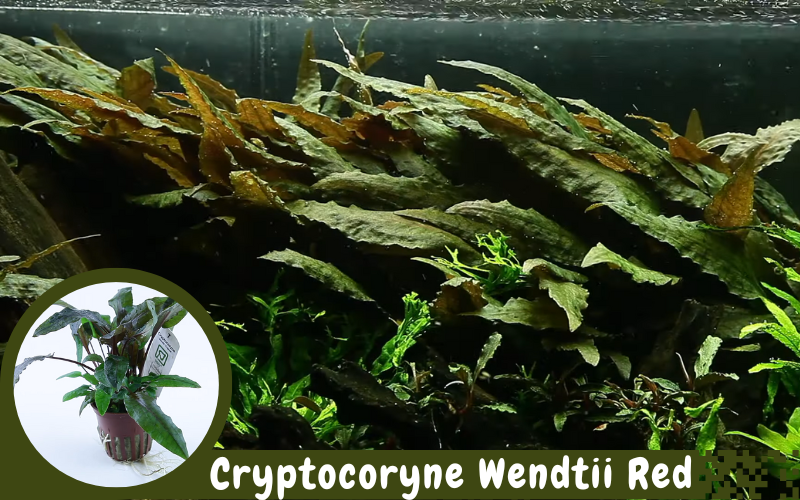
Cryptocoryne Wendtii Red is a beautiful rosette plant that’s characterized by its bronze coloration and hammered leaves. They are low-light aquarium plants. But it can be more pronounced under strong lighting.
Like most other crips, it’s a relatively slow grower. It will lay its leaves against the flat substrate by surrounding enough free space. It’s a heavy root feeder with a large root structure, so a nutrient-rich substrate is highly recommended.
Hence Cryptocoryne Wendtii Red is a slow grower; maintenance levels are low. You may experience the well-known crypt melt phenomenon in the early stages of its life as it adapts to its new underwater life. Simply remove the affected leaves; new growth will occur soon when the aquarium conditions are appropriate.
It grows well in nutrient-rich substrates. But they can also be planted in plain sand or gravel by adding nutrition capsules near the roots. To manage the Excess growth, you can remove the larger sleeves directly from the rootstock by peeling away or sharply pulling.
Marimo Moss Ball
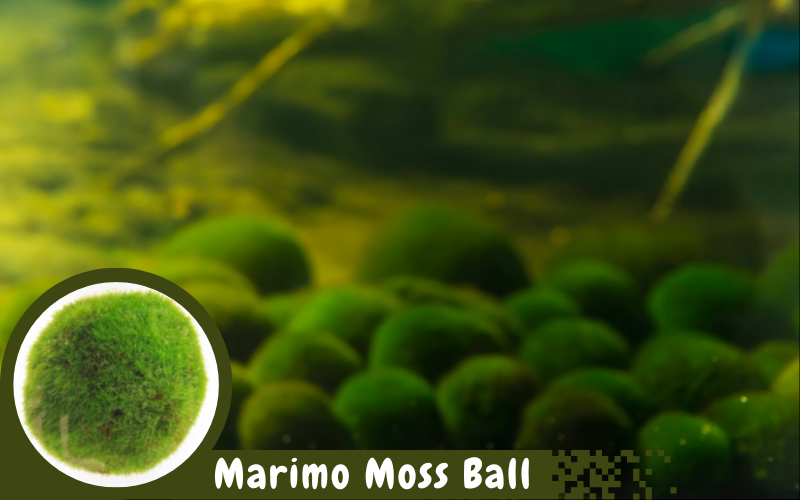
Marimo Moss Ball is a super easy aquarium plant for beginners. It’s a little green ball of Cladophora Algae. The only maintenance you have to do is occasional rolling. Otherwise, the bottom of it never sees the light, and it dies. It requires very low lighting.
Marimo Moss Balls are great for goldfish that will move it around the tank for you. Also, you can cut these plants apart and attach them to wood to make them look like trees that are super cool.
Vallisneria

Vallisneria Spiralis “Tiger” is a well-known aquarium plant found throughout USA, Europe, Africa, and south Asia.
It usually grows in nutrient-rich stagnant or slow-moving waters. Vallisneria is a plant that comes under the easy category and does not require high lighting levels or CO2 to thrive. It does best in harder water that is rich in carbonates.
Vallisneria is a 100% aquatic plant that will not grow immersed like most other aquarium plants. It produces runners that can form new plants. Under more intense light, the leaves turn a reddish color. Its tiger name refers to the characteristic of black marks that appear on its leaves.
Vallisneria can grow up to 60 centimeters making it one of the best background aquarium plants. It looks more creative when planted in groups as it gives a pleasant curtain backdrop effect.
The vertical nature of the plant adds a great sense of contrast to other plant species. Depending on the position in the aquarium, the flowing water can add a wonderful sense of movement to the entire layout.
In the case of shallow aquariums, the overhanging leaves of the Vallisneria plant can float on the water surface by shading the underneath plants. So you might arrange the nearby plants accordingly.
Anubias – Petite (Nana)
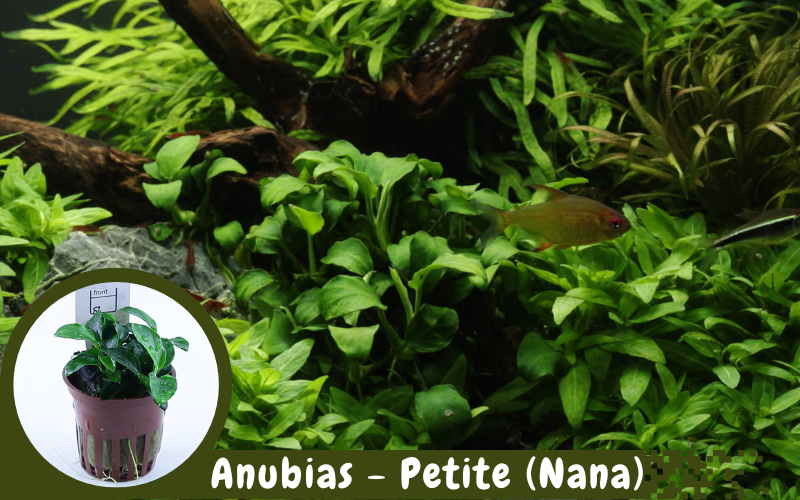
The beautiful Anubis petite is an easy, slow-growing rhizome plant. Anubis grows as Epiphyte plants that are best to attach to rocks or wood. You can purchase them in regular pots or aqua decors already attached to lava stone or driftwood.
It grows well in low light levels or in shaded areas. CO2 injection isn’t essential. The rhizome requires water circulation, and it should not be buried in the substrate but attached to the aquarium decors.
Positioning it deliberately in a shaded area is ideal for helping them to prevent algae growth. Its tough, waxy leaves make it a viable candidate for aquariums with boisterous or herbivorous fish.
The relatively small leaves also make them suitable for nano tanks. Planting in larger groups can create a great effect in bigger aquariums too. Due to its slow growth even with CO2 injection, Anubis petite comes under the low maintenance category.
You can minimize the excess growth of Anubis petite by removing the leaves directly from the rhizome. As well as, you can propagate it by splitting the rhizome with the attached leaves and reattaching elsewhere in the aquarium.
Ludwigiya palustris
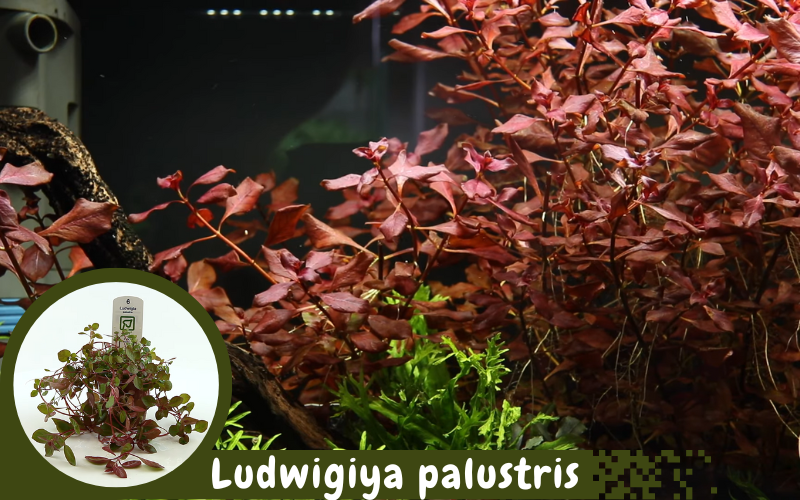
The stunning Ludwigiya palustris is characterized by its deep, bright red leaves and prolific growth of its stems and side shoots. It doesn’t need strong lighting or CO2 injection to grow, but it can produce the best colors and most attractive compact growth in good lighting.
In lower lighting, the internodal distance of the gaps between the leaves increase, and the leaves remain a duller green or red color while the lower leaves may drop off. It produces aerial roots, which can be left alone or trimmed off accordingly.
Ludwigiya palustris is an ideal background plant due to its fast growth. Its high-impact color can make a great effect as a focal point in the aquascape.
Also, Ludwigiya palustris is a fast grower, especially when growing with strong lighting and CO2 injection. When trimming these aquarium plants, it can form new side shoot growth. It will grow the plant very densely in a few weeks.
When the plant grows up, you should remove the lower portions of the plant and replant their healthy parts.
It is a nitrogen-hungry plant, so regularly dosing with specialized tropical nutrition will be better.
Rotala “Green”

Rotala is a beautiful stem plant. So it has an overhanging and cascading growth pattern, which makes it a good background plant.
Rotala green is an aquarium plant that requires moderate lighting. But with intense lighting and CO2 injection, it can get better results. In lower energy conditions, the growth may become somewhat leggy.
To achieve its characteristic cascading effect, it does require appropriate nutrition. The stems can typically grow up to 50 centimeters tall and 2 to 3 centimeters wide, and it rapidly forms side shoots after trimming.
Its fast growth helps to prevent the algae, and its stunning green colors make it a highly rewarding plant.
Conclusion
So you can try these easy aquarium plants in your freshwater aquarium and make it a better place for your wet pets. These plants are relatively straightforward to grow with minimum needs. You can purchase all of these aquarium plants from Tropica. They deliver a lot of aquarium plant varieties worldwide.

